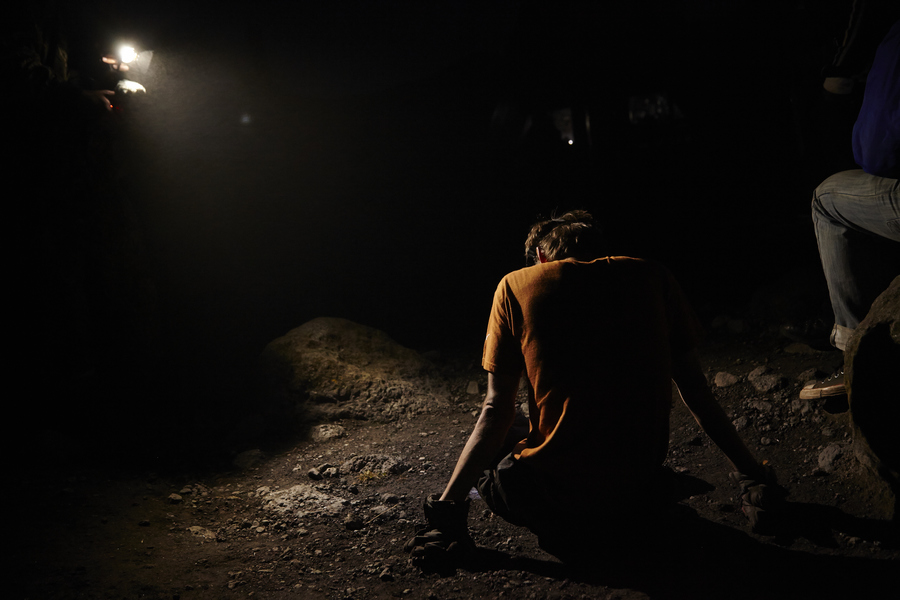Alex D’Jamoos and Sasha Pokhilko were born without legs and grew up as orphans after they were abandoned by their parents because of their birth defects. Until he was 15, D’Jamoos lived in an orphanage outside Moscow and got around using a modified skateboard.
In 2008, D'Jamoos met psychiatrist and filmmaker Natasha Shaginian-Needham who was filming a documentary at D'Jamoos's orphanage. When asked what he wanted, he told her a, "I want to walk”.
Natasha was so touched by Alex’s charm that she changed the course of her career and devoted herself to helping D’Jamoos come to the United States and get prosthetic legs. Through her adoption agency, Happy Families International Center, she would help D'Jamoos, Pokhilko and others come to the United States to get prosthetics.
In 2012, Natasha and Alex were determined to challenge his and the world’s conceptions of what it means to have a disability. The trio decided they would attempt to summit of Tanzania’s Mount Kilimanjaro. During their first attempt, in 2012. D’Jamoos wasn’t able to make it to the summit that first year, but the team returned in 2014 and 2015 to make subsequent, successful attempts.
This set of pictures chronicles two of those journeys up Tanzania’s Mount Kilimanjaro, in 2014 and 2015 (both men went up in 2014 and Pohilko went up in 2015). It shows their struggles and successes. Although making it to the top of Kilimanjaro isn't unique, D’Jamoos described his motivation for climbing: “The desire to walk isn’t a desire for mobility. It’s a desire to be normal.”

Sasha D'Jamoos takes a picture before beginning his first day of climbing Mount Kilimanjaro, Tanzania.

On the first day of climbing up Tanzania's Mount Kilimanjaro, Alex D'Jamoos removed his prosthetic legs and used his hands to walk the trail. The slippery, rocky terrain made it too difficult to walk on his prosthetic legs.

Sasha D'Jamoos begins his day above the clouds as he sets out from Camp Horombo during his second day climbing Mount Kilimanjaro, Tanzania. In 2014, D'Jamoos and his companion, Sasha Pokhilko, climbed Africa's tallest mountain on prosthetic legs. "The desire to walk is not about mobility," D'Jamoos said. "It's about wanting to be normal."

As the team approaches Kibo Hut on the fourth day of climbing, the summit of Mount Kilimanjaro is clearly was visible from the trail.

Sasha Pokhilko gets help adjusting his cleats from guide Godfrey Maregesi during the first day of hiking Mount Kilimanjaro. Pokhilko was born without legs or hands and summited Mount Kilimanjaro on prosthetic legs in 2012, 2014 and 2015.

The team takes a lunch break after a morning of hiking the trail up Mount Kilimanjaro. Natasha Sheeginan-Needham, center, created the I Want to Walk program to help give children prosthetic legs after meeting Alex D'Jamoos.

When the road became flat enough, Alex D'Jamoos was able to put on his prosthetic legs and walk the barren trail towards Kibo hut.

With another day of hiking until they reach the summit of Mount Kilimanjaro, the team begins their ascent up the long, dusty trail towards Kibo Hut.

Alex D'Jamoos arrives exhausted to camp Horombo on the second day of hiking Mt. Kilimanjaro. June, 2014. The rocky terrain prevented D'Jamoos from walking on his prosthetic legs and he spent the entire day hiking on his hands. Because of rocky and slippery terrain, D'Jamoos hiked most of Mount Kilimanjaro on his hands.

Alex D'Jamoos tried: boxing gloves, gardening gloves, and cutting up sleeping mats to protect his hands while hiking Mount Kilimanjaro. Because of rocky and slippery terrain, D'Jamoos hiked most of Mount Kilimanjaro on his hands.

Alex D'Jamoos began the day hiking with boxing gloves on his hands, but after his hands became blistered, he tried taping the gloves to his legs. Because of rocky and slippery terrain, D'Jamoos was not able to use his prosthetic legs for much of the hike and climbed most of Mount Kilimanjaro on his hands.

Sasha Pokhilko and Anna Ovchinnikova chat over dinner after a full day of hiking Mount Kilimanjaro. Both live in Moscow and are friends, where Pohilko works as an artist. "Anna checks in on me and looks after me," Pohilko said.

After a full day of hiking, the sun sets above the clouds at Camp Horombo.



During a lunch break, Sasha Pokhilko removes his prosthetics to dry the sweat from his legs.

Sasha Pokhilko rests in his cabin after the second day of hiking Mount Kilimanjaro on prosthetic legs.

Alex D'Jamoos climbs with his companions up Mount Kilimanjaro. Because of rocky and slippery terrain, D'Jamoos was not able to use his prosthetic legs and hiked most of Mount Kilimanjaro on his hands.

The team left Kibo Hut at 2 a.m. to make the final ascent to the summit of Africa's tallest mountain, Mount Kilimanjaro.

As the sun rises, Sasha Pokhilko and his guides make their way up the final ascent to the summit of Mt. Kilimanjaro. The team left at 2 a.m. to begin their final hike up Africa's tallest mountain.

Sasha D'Jamoos rests after reaching Gilman's Point at the top of Mount Kilimanjaro.

Sasha Pokhilko and Natasha Sheeginan-Needham dance and sing with their guides and porters after reaching the bottom of Mount Kilimanjaro after their climb.

The team celebrates with champagne after returning to the bottom of Mount Kilimanjaro after reaching the summit two days earlier.
